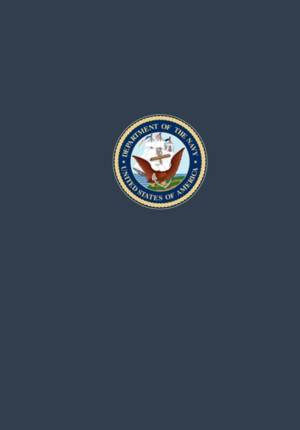
- Retrait gratuit dans votre magasin Club
- 7.000.000 titres dans notre catalogue
- Payer en toute sécurité
- Toujours un magasin près de chez vous
- Retrait gratuit dans votre magasin Club
- 7.000.000 titres dans notre catalogue
- Payer en toute sécurité
- Toujours un magasin près de chez vous
The United States Navy and the Vietnam Conflict
Volume I, The Setting of the Stage to 1959
Edwin Bickford Hooper, Dean C Allard, Oscar P Fitzgerald
Livre broché | Anglais
53,45 €
+ 106 points
Description
Although the American involvement in Vietnam is most often thought of in terms of its army and air forces, the United States Navy also had a significant presence in Southeast Asia from 1945 on. Its role in the immediate post-World War II era, its support of French forces up to the fall of Dien Bien Phu, and the run-up to a more substantial direct American involvement in the late 1950s is particularly obscure. "The United States Navy and the Vietnam Conflict: Volume I, The Setting of the Stage to 1959", the first in a series, provides the needed historical background for the period up to 1959 to assist readers in understanding naval roles in the Vietnam era, how these roles evolved, their relationships to other forms of power and influences, strategic considerations, and the impact of naval power on the conflict. It also traces the story of the Vietnam-related actions of the Navy through the initial period of American military aid to the British and French and the first five years that followed the French-Viet Minh War. Among the topic treated are the little-known American role in transporting Nationalist Chinese troops from Haiphong back to China in 1945, American military aid to the French prior to 1954, evacuation of Vietnamese civilians from the north at the end of that year - including the role of Lieutenant (jg) Doctor Thomas A. Dooley - and the training and equipping of the navy of the Republic of Vietnam up through 1959. In addition to the operational details, "The Setting of the Stage to 1959" also documents the administrative and diplomatic background, including the effects of the creation and implementation of the new U.S. Department of Defense and the behind-the-scenes discussion of possible American intervention to assist the French on the eve of their defeat. Students of the roots of American involvement in Indochina and naval historians will find The Setting of the Stage to 1959 a valuable resource in deciphering the tangled and prolonged American presence in Southeast Asia. Originally published in 1976 by the Naval History Division, United States Department of the Navy. 436 pages. maps. ill.
Spécifications
Parties prenantes
- Auteur(s) :
- Editeur:
Contenu
- Nombre de pages :
- 432
- Langue:
- Anglais
Caractéristiques
- EAN:
- 9781780390062
- Date de parution :
- 01-01-11
- Format:
- Livre broché
- Format numérique:
- Trade paperback (VS)
- Dimensions :
- 178 mm x 254 mm
- Poids :
- 743 g







